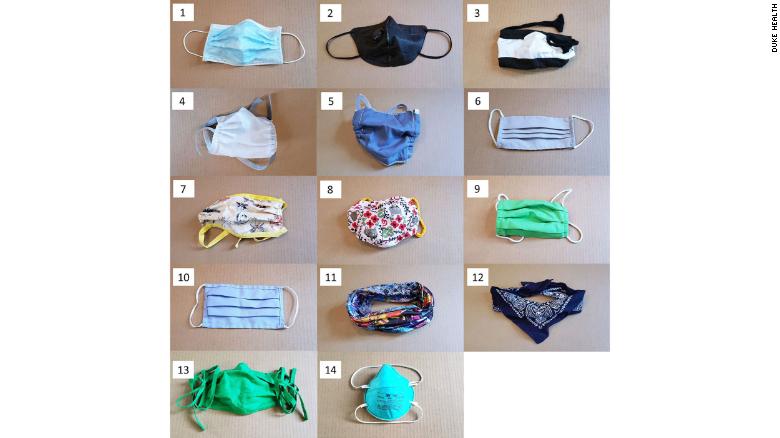Last Update: 01.14.2021
Also, please see my other posts on PPE as they have more information. Special continuing coverage of SARS-CoV-2. I’ve personally purchased AAMI Level 3 and Level 4 gear in the anticipation that I may have to transport/manage sick family members, God-forbid they get COVID-19.
Stay Tuned! The Spring “Mother of a List” is coming soon!
Masks & Respirators
- 4MD Medical, https://www.4mdmedical.com/
- Armbrust, https://www.armbrustusa.com/
- Devine Medical, https://www.devinemedical.com/
- Fisher Scientific, https://www.fishersci.com/
- Full Source, https://www.fullsource.com/
- Grainger, https://www.grainger.com/
- Home Depot, https://www.homedepot.com/
- Life Assist, https://www.life-assist.com/
- Lowes, https://www.lowes.com/
- Northern Safety, https://www.northernsafety.com/
- Turmerry, https://www.turmerry.com/
- ULine, https://www.uline.com/
- USA Medical Surgical, https://www.usamedicalsurgical.com/
- Vitality Medical, https://www.vitalitymedical.com/
CBRN + Half Masks
- Mira Safety, https://www.mirasafety.com/
- OPS-CORE SOTR, https://shop.gentexcorp.com/ops-core-sotr/
Hand Sanitizers (Gel and Liquid)
- 100PercentPure, https://www.100percentpure.com/
- Barr Hill, https://barrhill.square.site/
- Bear Waters Brewing, https://www.bearwatersbrewing.com/hand-sanitizer
- Big Storm Brewery, https://www.bigstormbrewery.com/handsanitizer/
- Blue Grass Distillers, https://www.bluegrassdistillers.com
- Casey Jones, https://www.caseyjonesdistillery.com/products/casey-jones-distillery-liquid-sanitizer
- Farmhouse Fresh, https://www.farmhousefreshgoods.com/index.html
- Fressly, https://www.fressly.com/
- Germ-X®, Vi-Jon, Inc.
- Hello Bello, https://hellobello.com/products/hand-sanitizer
- Honest, https://www.honest.com/
- Hoosiers, https://servehoosiers.com/
- Integrity Bottles, https://integritybottles.com/
- MedySkin, https://medyskin.com/
- MedZone, https://www.medzonecorp.com/
- OctoClenz, https://handsanitizermadeinusa.com/
- Purell® Advanced, Gojo Industries, Inc.
- Purell® Advanced Naturals, Gojo Industries, Inc.
- Rx Los Angeles, https://www.rxcandles.com/
- Sanipackz, https://sanipackz.com/
- Sugar Creek, https://sugarcreeksanitizer.com/
- Viroshield Natural Defense, https://www.viroshields.com/
- Wet Ones®, Edgewell Personal Care
Faceshields
Tip: A ratcheting system is well worth extra money. It’s the best. You’ll thank me for it!
- **3M Ratchet Headgear H8A, 82783-00000, with 3M Clear Polycarbonate Faceshield WP96, https://www.amazon.com/gp/product/B007JZ1QQQ/ref=ppx_yo_dt_b_search_asin_title?ie=UTF8&psc=1
- **Dynatomy (disposable), https://www.dynatomyproducts.com/
- Full Source, https://www.fullsource.com/
- Grainger, https://www.grainger.com/
- Home Depot, https://www.homedepot.com/
- Lincoln Electric, https://www.lincolnelectric.com/en-us/equipment/welding-gear/apparel/Pages/faceshields.aspx
- Lincoln Electric Omnishield from Amazon, https://www.amazon.com/dp/B07PRM54FQ/?coliid=I262227XWHG6O1&colid=3KHJPM2M2IIBV&psc=1&ref_=lv_ov_lig_dp_it
- Lowes, https://www.lowes.com/
- **Uvex S8510 Bionic Ratchet Face Shield System – Clear Anti-Fog Lens, https://www.fullsource.com/uvex-s8510/
** Faceshields that I’ve purchased. Love the Uvex and 3M ones are great in my workshop because I’m an artist and sculptor as well.
PPE Clothing
- Cardinal Health, https://www.cardinalhealth.com/content/dam/corp/web/documents/brochure/cardinal-health-smartgown-surgical-gowns-2019.pdf
- Cardinal Health, https://www.cardinalhealth.com/en/product-solutions/medical/infection-control/surgical-gowns/surgical-gowns/aami-level-4-surgical-gowns.html
- Cascade Healthcare Solutions, https://www.cascadehealthcaresolutions.com/
- Devine Medical, https://www.devinemedical.com/
- DuPont Tyvek 400, https://www.dupont.com/products/dupont-tyvek-400-ty127s-wh.html
- DuPont Tyvek 500, https://www.dupont.com/products/dupont-tyvek-500-ty198s-wh.html
- Fastenal, https://www.fastenal.com/
- Fisher Scientific, DuPont™ Tyvek™ IsoClean™ Clean and Sterile Hood, https://www.fishersci.com/shop/products/dupont-tyvek-isoclean-clean-sterile-hood/17988113#?keyword=hood
- Full Source, https://www.fullsource.com/
- Grainger, https://www.grainger.com/
- Kimberly Clark Catalog, https://www.dia-m.ru/upload/iblock/afd/533-kimberlyclark.pdf
- Kimberly Clark KleenGuard, https://www.kcprofessional.com/en-us/brands/kleenguard
- Kimberly Clark KleenGuard, A20 Hood, https://www.kcprofessional.com/en-us/products/safety-and-personal-protection-equipment/disposable-apparel/dry-particulate-protection/breathable-particle-protection/kleenguard-a20-hood/36890
- Kimberly Clark KleenGuard, A60 Hood, https://www.kcprofessional.com/en-us/products/safety-and-personal-protection-equipment/disposable-apparel/liquid-particulate-protection/bloodborne-pathogen-and-chemical-splash-protection/kleenguard-a60-hood/45343
- Medex Supply, https://www.medexsupply.com/
- Medline at Home, https://athome.medline.com/en
- Medline Sirus Plus, Medline Model: DYNJP2201S, Medex SKU: MED-DYNJP2201S, https://www.medexsupply.com/infection-control-protective-apparel-medical-gowns-surgical-gowns-medline-sirus-plus-surgical-gown-w-towel-poly-reinforced-large-case-of-20-x_pid-89324.html?pid=89324
- MEDLINE NONLV315 MULTI-PLY AAMI LEVEL 3 ISOLATION GOWNS, PREMIUM ELASTIC WRIST, https://www.devinemedical.com/NONLV315-Multi-Ply-AAMI-Level-3-Isolation-Gowns-p/nonlv315.htm
- Northern Safety, https://www.northernsafety.com/
- Staples, https://www.staples.com/ (Tyvek booties)
- Tacoma Screw, http://www.tacomascrew.com/
- ULine, https://www.uline.com/
- VitaFlex, https://www.vitaflexusastore.com/
Nitrile Gloves
Everyone has their favorite brand. If you’re having a tough time Tacoma Screw might be helpful for the XL XXL sizes.
- Tacoma Screw, http://www.tacomascrew.com/
Work Gloves
- Mechanix (cut-resistant gloves), https://www.mechanix.com/
UV-C
- Phone Soap (https://www.phonesoap.com/), HomeSoap, https://www.phonesoap.com/products/homesoap
- Phone Soap Pro Healthcare, https://www.pro.phonesoap.com/
Air Purifier
- Air Soap (https://www.phonesoap.com/products/airsoap)
Power
- Goal Zero, goalzero.com
- Jackery, https://www.jackery.com/
- Biolite, https://www.bioliteenergy.com/
Water
- Berkey, https://www.berkeyfilters.com/
- Lifestraw, https://www.lifestraw.com/
- Sawyer, https://sawyer.com/water-filtration/
- Sillcock 4-Way Water Key, https://youtu.be/KHWcZxopPCE
- Aqua Mira
- Katadyn MicroPur
Fire
- 100% Beeswax candles from USA burns the cleanest–better than soy!
- Ferro rod or magnesium bar. Make sure you know how to use it before you need it.
- Exotac, https://www.exotac.com/
- Light My Fire Firesteel, https://lightmyfire.com/
- UCOgear, https://www.ucogear.com/
- Zippo, https://www.zippo.com/
Food/Seeds
- My Patriot Supply, https://mypatriotsupply.com/
- Ready Hour, https://readyhour.com/
- Strictly Medicinal Seeds, https://strictlymedicinalseeds.com/
Other Equipment
- 4+ mil plastic sheeting for barrier (e.g. doors, vents, windows, etc.)
- 900 lb. Dupont Kevlar Cord
- Camping Axe
- Cold Steel, https://www.coldsteel.com/
- Exotac, https://www.exotac.com/
- Gaff tape.
- Harvest Right, https://harvestright.com/
- Kaito Emergency Radio, https://kaito.us/
- Knife Center, https://www.knifecenter.com/
- LA Police Gear, https://lapolicegear.com/
- Lab goggles.
- Leatherman, https://www.leatherman.com/
- Lodge Cast Iron (get a camp dutch oven so you can just bury it), https://www.lodgecastiron.com/
- Morakniv, https://morakniv.se/
- Nitecore, https://nitecore.com/
- Pelican, https://www.pelican.com/
- Recycled Firefighter, https://recycledfirefighter.com/
- Reliance, 7 gal, Jumbo-Tainer, (https://www.rei.com/product/777828/reliance-jumbo-tainer-water-container-7-gal)
- Rite in the Rain, https://www.riteintherain.com/
- Scepter, https://www.scepter.com/
- Sealline Gear, https://www.seallinegear.com/
- Silky Saws, http://www.silkysaws.com/
- Siphon, to siphon gas or water.
- Splitting Axe
- SureFire, https://www.surefire.com/
- Task Tools (x4 to create clean/sick room), Task Tools T74490 81 – 159 Inch Quick Support Rod
- Titan Warrior Cord
- Tomahawk
- Zip Wall (for establishing clean/sick room), https://www.zipwall.com/
- Zip ties.

